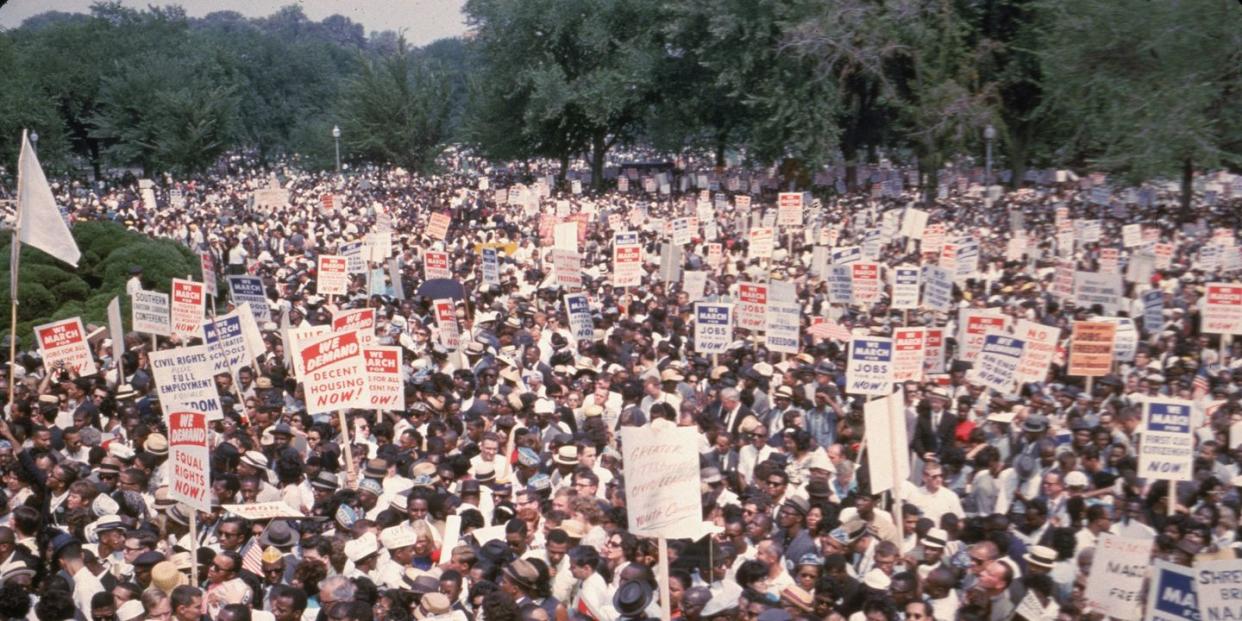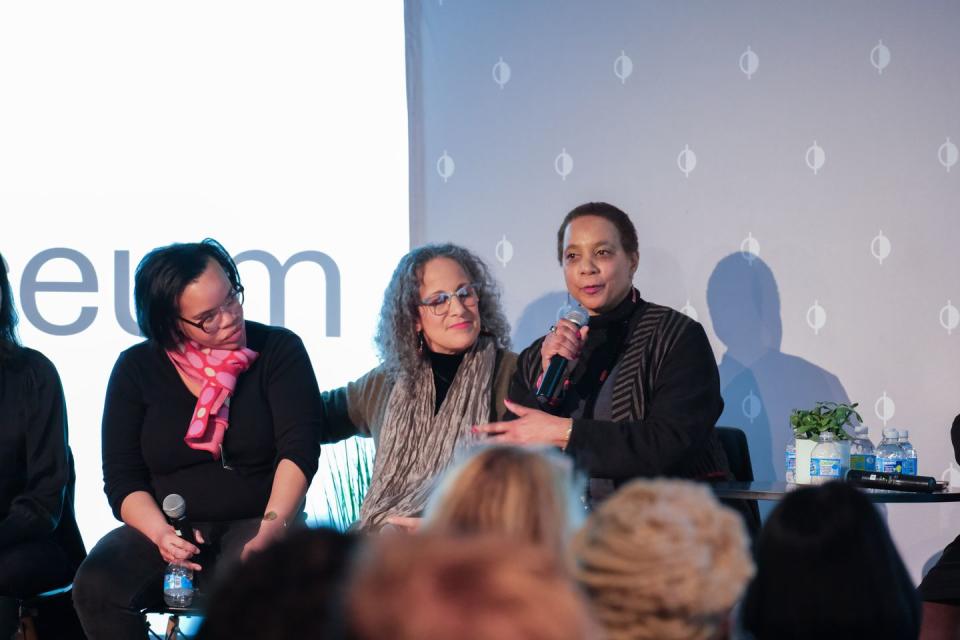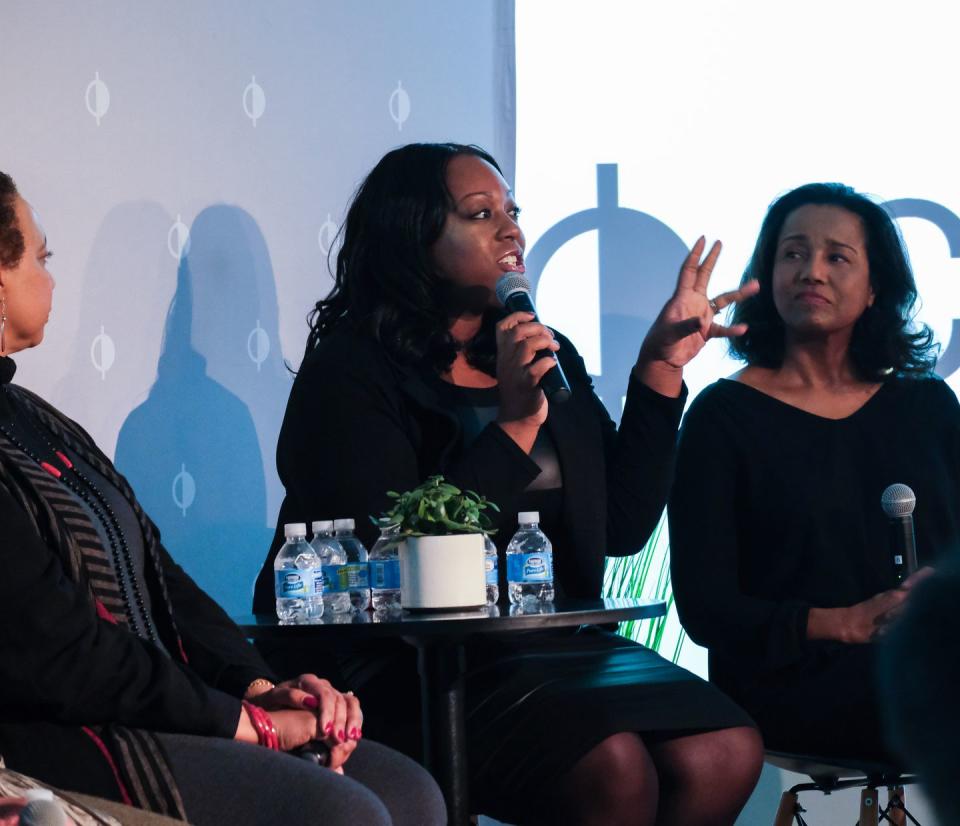Lessons From the Daughters of the Movement

In November of 2017, Stacy Lynch, daughter of Bill Lynch, famed democratic political strategist and the mastermind behind New York City’s first black mayor David Dinkins, convened the first gathering of the Daughters of the Movement. It was for selfish reasons that she made those initial calls for a dinner, Stacy said; “I needed a sisterhood.”
The sisterhood that formed was, to put it lightly, one of a kind. The dozen or so women who came together were civil rights royalty, raised by the men and women we have to thank for the progress of the 20th century. They included: Gina Belafonte, daughter of Harry Belafonte; Suzanne Kay, daughter of Diahann Carroll; Hasna Muhammad, daughter of Ossie Davis and Ruby Dee; Dominique Sharpton, daughter of Rev. Al Sharpton; and Keisha Sutton-James, granddaughter of Percy Sutton. “Our lived experience is not normal,” Sutton-James told ELLE.com. “We grew up at the knees of the most brilliant minds.”


This unique sisterhood gathered again last week at the International Center for Photography for a wide-ranging discussion moderated by Emmy-nominated producer Tanya Selvaratnam on their unique childhoods, their work, and what they and their parents would think about our current political climate.
Hasna Muhammad reminded us that there’s both a privilege and burden to being a legacy holder, but that the privilege far outweighs the burden.
Gina Belafonte reminisced about sitting on Dr. King’s lap and holding the hand of Fannie Lou Hamer. She remarked on being a sponge to all of it: “The totality: the trauma, the beauty, the pain, the resilience.”
Suzanne Kay told us about how hard gender roles were on her mother, so much so that she would jokingly say “I need a wife.” Suzanne opened up about how she blamed her mother for years for how that juggling act of career and home impacted her-until she become a mother herself.
Dominique Sharpton talked about watching her father get stabbed on television at the age of five or six and immediately having an asthma attack. What she learned from that day and all the days to come, was that this work would never be easy but that “we have to keep going.”
As a young black woman passionate about activism, hearing from these Daughters was food for the soul. My activist home is The Gathering for Justice, founded by Harry Belafonte, and so the many campaigns I’ve been a part of (from #FreeMeekMill to the Women’s March) have all been centered on intergenerational organizing. But as Dominique Sharpton said, we often think of Martin Luther King Jr. and then President Obama, erasing all of the work that continued on beyond their parents-both through the Daughters and through young people who continue to take on the mantle. When asked what gives them hope, they all cited youth-led activism which follows the historical legacy their parents left behind. “We have never excelled individually,” said Keisha. “That’s not our model. We excel collectively. The idea of walking through a door of opportunity and not holding it open for someone else behind me is inconceivable.”
What they learned from their parents and grandparents was that there were so many roles to be played in the movement whether hosting fundraisers, creating art that reflected the world they wanted to live in, organizing protests and marches, or strategizing behind the scenes. The work their parents did (and the work these Daughters do now) was like fitting puzzle pieces together. No one person or role was identical and no one person or role was replaceable. Everyone knew what the end goal was and the community they had built ensured everyone’s eyes stayed on the prize. There was accountability, constant communication, and deep relationships.
The Daughters know collective was action was crucial to their parents' impact, and they see collective action as somewhat missing right now. To a chorus of amens and mmhmmms, Stacy reminded us that “we live in a time of instant gratification… but we need to be still for a second, strategize, and execute!” Dominique piggybacked off of that with one of her father’s mantras: “beware of shiny objects.”

Of course, the room was eager to know what their parents and grandparents say about the state of America now. Muhammad believes her mother Ruby Dee “would be pissed and she would be in the street.” Stacy said her father Bill Lynch would be behind the scenes putting in the work. Susanne, Gina, and Dominique still have their parents with them. Susanne says they’d all be stepping back from “moment news” and doing the long term work necessary in order to be effective. Gina had this to say of Harry Belafonte, who just turned 92: “My father is still mentoring others, so I’m still seeing that… mentoring many of the Black Lives Matter and Movement 4 Black Lives folks and the Justice League and all kinds of folks who are on the front lines doing this work that sit at his feet and get his wisdom and his strategy.” She also noted that she felt all of their parents would be turning to art to speak to what’s going on. Dominique’s father Rev. Al Sharpton is also still with us and does part of the work through the National Action Network and his political commentary. “My head gets blown everyday, but when you think about it in the context of a continuum,” said Keisha. “We all stand on someone’s shoulders.” The work must continue.
About Daughters of the Movement: We are legacy holders. A group of women who sat at the feet of those who were on the front lines of the civil rights movement. We carry the oral history, cultural values, and wisdom passed down to us by some of the revolutionary leaders who turned the tide of American history. We are the Daughters of the Movement.
About For Freedoms: Where Do We Go From Here?: For Freedoms: Where Do We Go From Here? is a visual art exhibit curated by Ava Hess, in collaboration with For Freedoms, that explores the role of art and visual representation in American civic life. The exhibition features a series of photographs that re-envision American artist Norman Rockwell’s paintings of the "Four Freedoms" articulated by Franklin D. Roosevelt in his 1941 State of the Union Address.
('You Might Also Like',)
